Kutch to Kashi
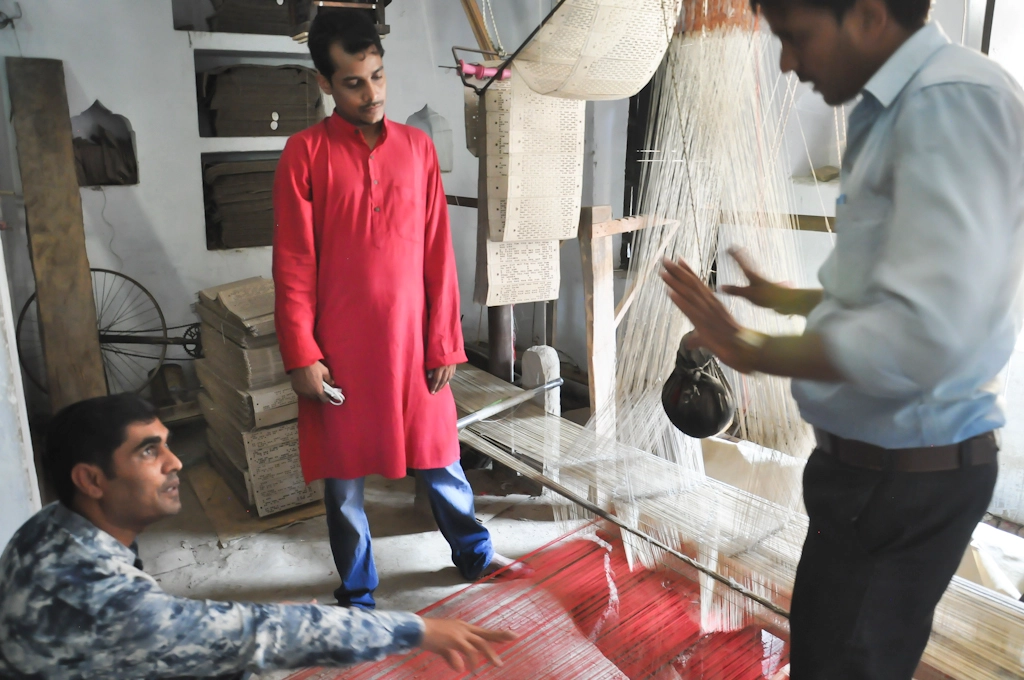 Somaiya Kala Vidya was invited to begin a new Outreach project with a group of weavers in Varanasi. Like all collaborations, it involved negotiation. At first, the All India Artisans and Craftworkers Welfare Association (AIACA) wanted us to hold some workshops in Varanasi, followed by some workshops in Kutch. We said we would like to do the project as an Outreach project, as we have done in Bagalkot and Lucknow. Finally we settled on a jointly run project.
Somaiya Kala Vidya was invited to begin a new Outreach project with a group of weavers in Varanasi. Like all collaborations, it involved negotiation. At first, the All India Artisans and Craftworkers Welfare Association (AIACA) wanted us to hold some workshops in Varanasi, followed by some workshops in Kutch. We said we would like to do the project as an Outreach project, as we have done in Bagalkot and Lucknow. Finally we settled on a jointly run project.
Jentibhai, a Weaver Designer from Bhujodi and member of the Bhujodi to Bagalkot team, traveled with me to Varanasi to find out what is feasible.
Jentibhai is quiet and thoughtful. He was the one who thought of bringing the weavers from Bagalkot to Bhujodi. During a long layover in Mumbai, we look at a book on Varanasi weaving to get an understanding of the tradition, which is different from the weaving of Bhujodi in almost every way you could think. Jentibhai says he will have to understand the jacquard mechanism that the Varanasi weavers use. Once he sees it, he will understand what can be done.
We arrive at night, to a wall of sticky heat, and drive through a long corridor of rough rubble roads running on either side of a massive elevated road under construction. Homes and shops have been ruthlessly chopped to make way for this super highway. Old sacrificed for new.
The next morning we meet the weavers and the AIACA team in their office. It is a boon to have a group of people on the same page, who understand the vision of artisan design and enterprise. That is the AIACA team.
The weavers, about thirty-five termed “small and medium,” meaning the degree to which they weave themselves or supervise other artisans, listen intently as I present an illustrated journey through our education programs. I zoom in on the Outreach project, intending to show how the concept of design education is transferrable, while the concept of innovation within tradition insures that each community will work out its own design solutions with integrity.
They have practical questions: how does the funding work? Do the students have to do homework? And who checks it? How do you know what the Market wants? How do you prevent copying?
They are quite vocal. And the most vocal find reasons why design education is not possible here. You are talking about Kutch, they say. That is a different kind of weaving. They see their situation literally. They explain why they can not change their designs. The main obstacle is the straitjacket of the jacquard. Making a new design is time consuming and expensive. The designs are given to a graph maker, and then to card punchers. Once the patterns are ready, you have to make a lot of saris to recover the cost. After all, the jacquard is a production machine. It was invented to make weaving faster, cheaper and more standard.
I tell them that hand loom is no longer for need; it is for desire, love, joy. But right now the weavers can’t understand other goals. Besides that, the colours and raw materials that they use are given by designers.
They are so used to working for someone- a “master weaver” middle-man, a designer, a shop, an organization- that they can’t imagine another way.
So they neatly define their challenges: the restrictions of the jacquard loom, and the huge number of weavers and products in the market. The weavers say there are over 300,000 weavers! AIACA says only 60,000 are handloom weavers. But Bhujodi has barely 200!
Still, I believe in the power of design. There are other things you can change.
I say, on one warp you can still make each sari unique.
Salim, one of the most vocal weavers, agrees. Yes! And I do it!
Surely they are creative. They just need direction in how to use creativity. They need to see. They have been taught that they are workers. So they forget their creativity. Khalidbhai, a current SKV design student said, “Artisans don’t know their capacity. SKV opens their minds.” They need to push or break their restrictions- as Avanish, the AIACA consultant, tells them.
Where do designers get their ideas? I ask. I hold up the Varanasi book. Who has seen this?
Not one person!
This is your heritage, I say.
They eagerly flip through the pages, and suddenly one young man stops. There is a picture of him at a loom! The caption says, ‘The weavers’ condition does not match the richness of the saris.’
There it is.
After lunch, Jentibhai has his session. He shows his work, explaining what he kept of tradition, what he changed. The Varanasi weavers hold the samples with keen interest. What yarn did you use? What reed? What loom? They ask…. Then, “Oh, we can do this!”
Here Madhura, AIACA Director, intervenes. “We’re going on a diversion,” she says. “It’s not about making Bhujodi stoles in Varanasi. It’s about innovating on your own tradition!”
Then she asks who wants to learn design, to try. A dozen hands go up– including the young weaver in the book.
Those not interested file out. And those interested breathe a little sigh, and eagerly sit and talk with Jentibhai, weaver to weaver.
I ask Jentibhai how he thinks the workshop went?
We’ll know more tomorrow, when we visit their homes, he answers.
We visit only one home. The looms are crowded close to each other, silk and golden threads stretched over crudely dug earth pits, simple bamboo poles for treadles. Many of the weavers are elderly. One young man, one of the interested ones, tells us that he has learned computer skills; they have experimented with engineered skirt and blouse pieces.
So, can this group of weavers make Varanasi weaves that we haven’t imagined? I will love to see.
Ahead I see hope, excitement, and hard work.
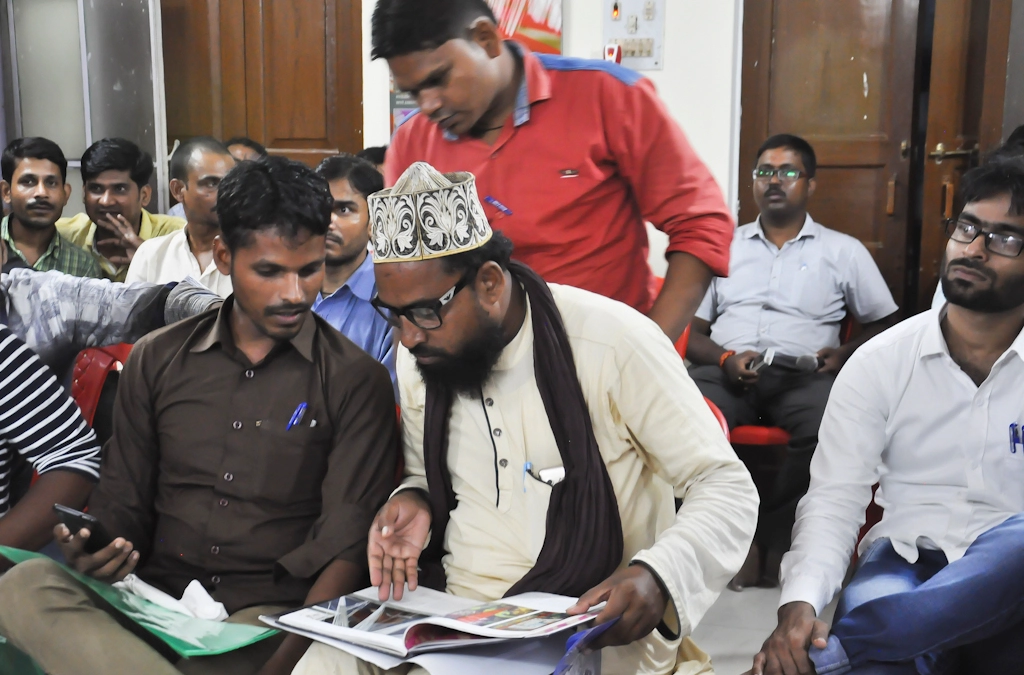

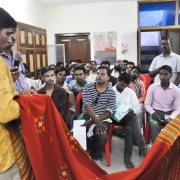
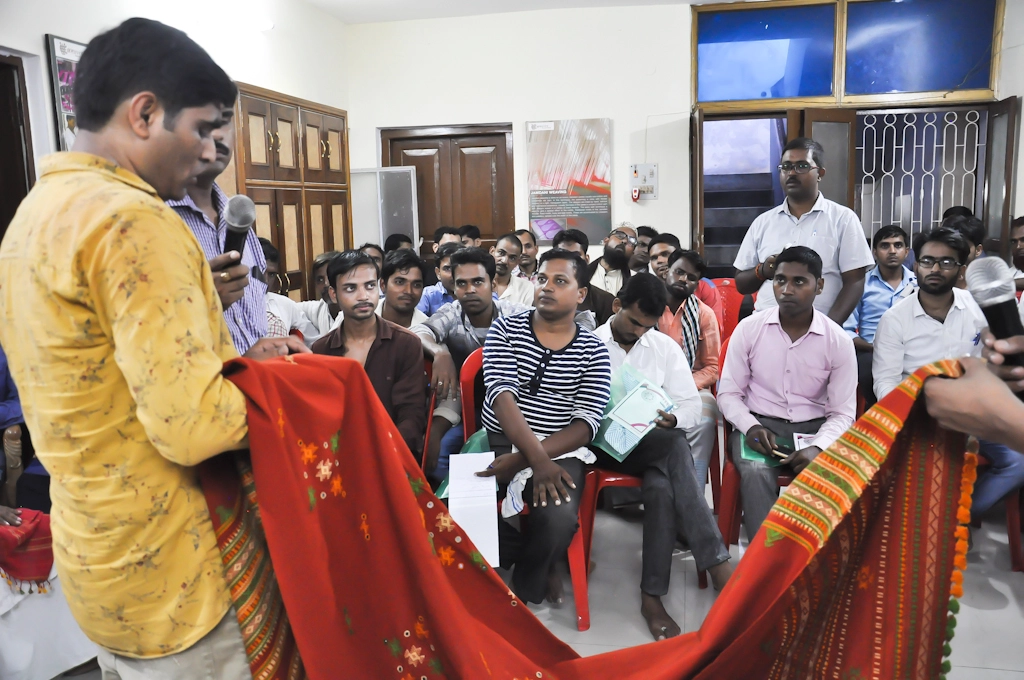
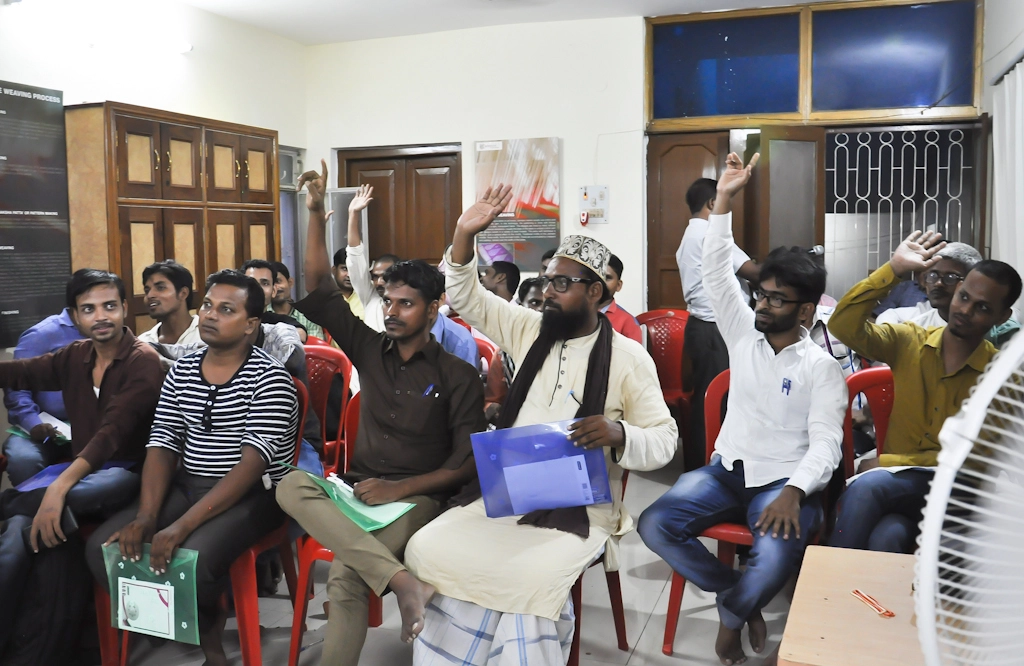
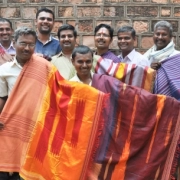
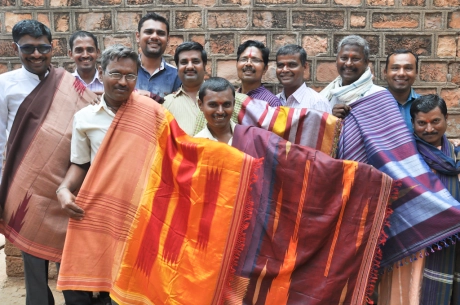 “We want to weave!” They avowed, one after another, all nine of the Kamatgi Jeevadaara group. Remarkable for weavers in Karnataka today, when their community members refuse to give a daughter in marriage to a home with a loom. But in three and a half years, working artisan-to-artisan with Somaiya Kala Vidya graduates in our Bhujodi to Bagalkot Outreach project, these weavers have learned to love their tradition.
“We want to weave!” They avowed, one after another, all nine of the Kamatgi Jeevadaara group. Remarkable for weavers in Karnataka today, when their community members refuse to give a daughter in marriage to a home with a loom. But in three and a half years, working artisan-to-artisan with Somaiya Kala Vidya graduates in our Bhujodi to Bagalkot Outreach project, these weavers have learned to love their tradition.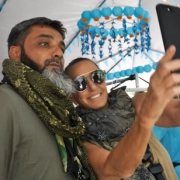
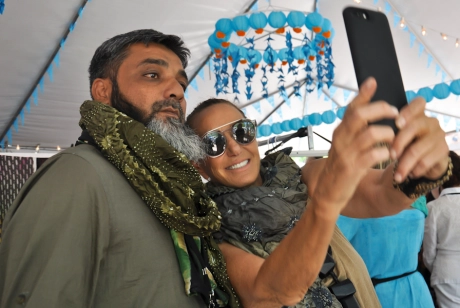 Over twelve years of design education for artisans, the issue of copying has emerged among artisan designers. They discuss it furtively, angrily.
Over twelve years of design education for artisans, the issue of copying has emerged among artisan designers. They discuss it furtively, angrily.